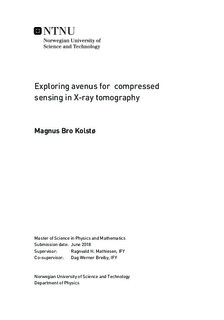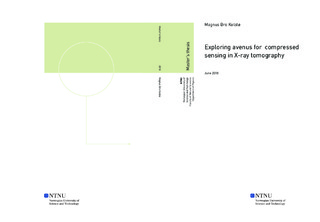| dc.description.abstract | In this paper different ways to reduce the amount of data associated with tomographic scans were explored. The L-BFGS algorithm was tested using a SIRT back-projection as its gradient. It showed faster and better convergence than SIRT and SART for low numbers of projections. The OWL-QN variant was tested to implement compressive sensing using sparsity in DCT, DWT, a Fourier-grid and the sample. There were problems with bad search directions and slow convergence limiting the results, but using DCT and the sample itself showed promise. Using random sampling to reduce the size of projection data-streams also had promising results, especially when combined with compressive sensing using DCT. Simple analysis of the feasibility of keyframing the data-stream were positive, but noise could prove a problem. | |

